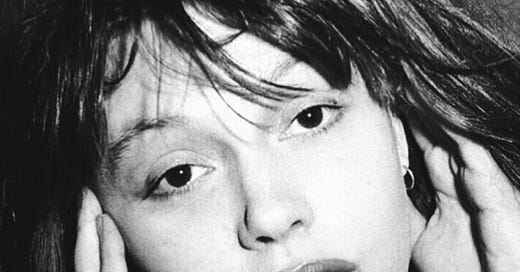The World’s A Girl—The Forgotten Genius of Anita Lane
The Australian singer Anita Lane—often only remembered for her collaborations with boyfriend Nick Cave—paved the way for artists like Lana Del Rey.
There is a lesson that most girls learn early on in their cultural education. If there is a male artist you admire—or perhaps, have been told to admire—the chances are that searching for his name plus ‘wife’ will lead you to another, lesser known artist, often one whose work you will resonate with just as deeply. This process will lead you to Martha Gellhorn, Lee Krasner, Francoise Gilot, Dora Maar, Elaine de Kooning, Zelda Fitzgerald, Alice Springs, Kathleen Hanna, Jane Bowles, Elizabeth Harwick, Deborah Eisenberg, Camille Claudel, Lil Hardin Armstrong, Ida Lupino and countless others. One of my early, instructive lessons in the pursuit of forgotten women artists came when I was a teenage girl, obsessed with Nick Cave. One doesn’t have to spend too much time in the Cave universe to stumble on the name Anita Lane. Lane is often relegated to that tedious moniker “muse”, but she is more rightfully remembered as one of Cave’s key creative collaborators during a particularly fruitful creative period in the late ‘70s and early ‘80s, at the height of The Birthday Party and the incubation of The Bad Seeds.
Anita Lane died in April 2021, aged 61. I remember where I was when I read the news, in my old flat in Notting Hill. It landed with a particular blow. The day before I’d been e-mailing a publicist at Mute, Lane’s record label. We were going back and forth on possible dates for an interview I was going to conduct with Lane. By this point, Lane hadn’t released music in more than two decades, and was living a largely reclusive life in the suburbs of Melbourne. I had been commissioned to write a piece about her forgotten genius for The Guardian Australia. I originally pitched the story as little more than a passion project, but, in a stroke of divine intervention, I learned, upon speaking to Mute, that Lane was gearing up to release new music. The piece would trace her unsung accomplishments as a central player in one of the most interesting and prolific periods of Australian music history, while also diving into a new body of work, in her first album since 2003. Her death was sudden, and shocking, immortalised in tributes by The New York Times, Rolling Stone, and Cave himself, who wrote in The Red Hand Files: “You think you know grief, you think you’ve worked out its mechanics, you think you’ve become grief-savvy—stronger, wiser, more resilient—you think that there is nothing more than can hurt you in this world, and then Anita dies.”
I wanted to write about Lane at the time but didn’t, and have been dogged by the desire to write about her again and again in the years since, not in the least because we, as women, have a moral obligation to keep the spirit of our own idols alive, to make them eternal, in the way men so effortlessly make their idols eternal. A couple of weeks back this impulse was reignited when I saw Nick Cave and the Bad Seeds at the O2 in London, a life-affirming quasar of a concert that left me, above anything else, deeply happy to be alive. I was particularly moved by Cave’s rendition of ‘O Wow, O Wow (How Wonderful She Is)’, a track from his latest album, ‘Wild God’, dedicated to Lane. “She rises in advance of her panties, I can confirm that God actually exists,” he sang, as a video of an incandescent young Lane played on a giant projector. The song’s outro features one of the last voicemails Lane sent Cave before she died. With her glorious Melbourne accent, she reminisces on the couple’s halcyon days in London, lying in bed in a flat in Brixton, making up songs. “I didn’t even realise that everyone wasn’t like that,” she says.





